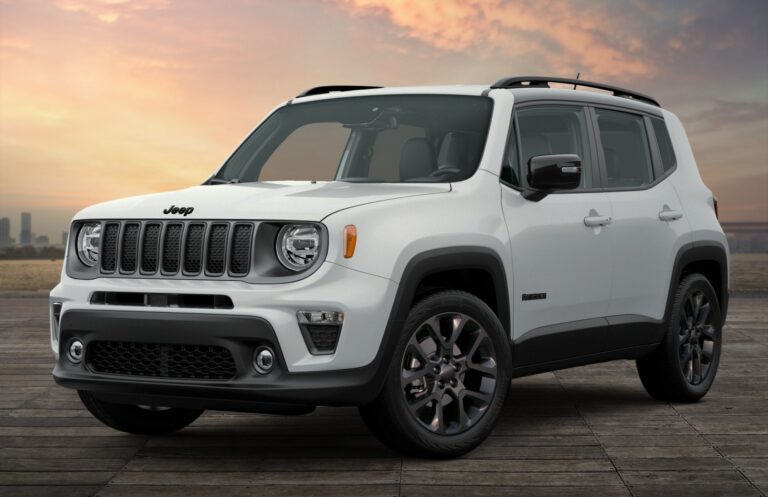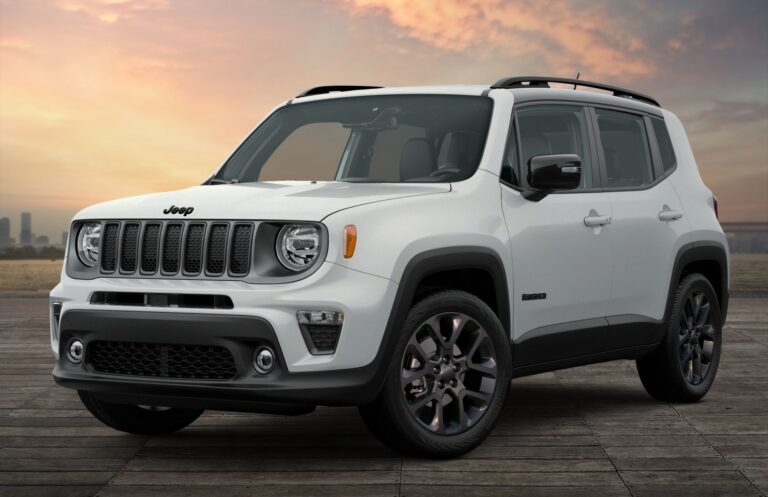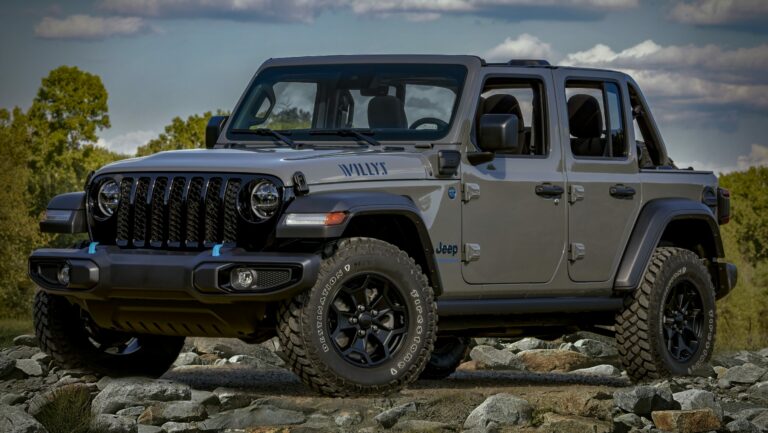Top Speed Of A Jeep Trackhawk: Unleashing the Beast
Top Speed Of A Jeep Trackhawk: Unleashing the Beast jeeps.truckstrend.com
In the automotive world, the very notion of a high-performance SUV was once considered an oxymoron. SUVs were practical, family-oriented vehicles, designed for utility and comfort, not for setting land speed records or challenging sports cars. Then came the Jeep Grand Cherokee Trackhawk, a vehicle that not only defied these conventions but obliterated them with a thunderous roar. At the heart of its audacious performance lies a headline-grabbing figure: its top speed. More than just a number, the Trackhawk’s top speed of 180 mph (290 km/h) is a testament to an audacious engineering feat, blending the rugged capability of a Jeep with the supercar-slaying power of a Hellcat engine. This article delves deep into what makes the Trackhawk a speed demon in an SUV’s clothing, exploring the intricate details that allow this magnificent beast to reach such astounding velocities.
The Heart of the Beast: The Supercharged HEMI V8
Top Speed Of A Jeep Trackhawk: Unleashing the Beast
The most significant factor contributing to the Jeep Trackhawk’s blistering top speed is undoubtedly its powertrain: the formidable supercharged 6.2-liter HEMI V8 engine. Borrowed directly from Dodge’s Hellcat models, this engine is a masterpiece of American muscle engineering.
Initially, for its 2018 debut, the Trackhawk produced a staggering 707 horsepower and 645 lb-ft of torque. For the 2021 model year and beyond, subtle revisions pushed these figures even higher, to 710 horsepower while maintaining the impressive torque output. This immense power is generated through forced induction, specifically a 2.4-liter twin-screw supercharger that force-feeds air into the engine, dramatically increasing its output compared to a naturally aspirated engine of similar displacement.
To put this into perspective, 700+ horsepower is a figure typically reserved for exotic sports cars or dedicated track machines, not a family-friendly SUV weighing over 5,300 pounds. The sheer volume of power is what allows the Trackhawk to overcome its considerable curb weight and the aerodynamic drag inherent in an SUV’s shape, propelling it to speeds that would leave many performance sedans in its dust. The robust construction of the HEMI engine, including its forged steel crankshaft and connecting rods, ensures it can withstand the extreme forces generated at high RPMs and sustained high speeds.
Aerodynamics and Engineering for High Velocity
While raw power is essential, it’s not the only ingredient for achieving a high top speed. Aerodynamics play a crucial role, especially for a vehicle with the inherent bluntness of an SUV. Jeep engineers faced the significant challenge of making the Trackhawk slice through the air efficiently enough to hit 180 mph.
Unlike a sleek sports car, the Grand Cherokee’s fundamental design is boxier. However, subtle yet effective modifications were implemented to improve its aerodynamic profile. The Trackhawk features a unique front fascia with larger air intakes to feed the thirsty supercharger and provide cooling for the engine and brakes. The hood incorporates heat extractors, which not only look aggressive but also help dissipate heat from the engine bay, crucial during high-speed runs.
At the rear, a subtle spoiler helps manage airflow and reduce lift at high speeds, contributing to stability. Underneath the vehicle, engineers likely employed underbody panels to smooth airflow and reduce turbulence, further minimizing drag. While the Trackhawk will never be as aerodynamically efficient as a purpose-built supercar, these targeted modifications, combined with the sheer force of the HEMI engine, allow it to punch through the air with surprising effectiveness, maintaining stability and control even as it approaches its limit.
Drivetrain and Transmission: Managing the Power

Delivering 700+ horsepower effectively to the ground is as critical as generating it. The Jeep Trackhawk employs a highly sophisticated drivetrain and transmission system to manage its prodigious power output and ensure it translates into forward motion, not just wheelspin.
The Trackhawk is equipped with a robust ZF-sourced TorqueFlite 8HP90 eight-speed automatic transmission. This transmission is specifically designed to handle the massive torque of the Hellcat engine. Its rapid shift times and optimized gear ratios are crucial for both blistering acceleration (0-60 mph in a mere 3.5 seconds) and for allowing the engine to operate efficiently at its peak power band during high-speed cruising. The wide range of ratios ensures that the engine can always find the right gear to either accelerate quickly or sustain a high speed with optimal efficiency.
Power is routed through Jeep’s Quadra-Trac on-demand 4×4 system. Unlike traditional Jeep 4×4 systems designed for off-roading, the Trackhawk’s system is performance-tuned, sending torque primarily to the rear wheels in most driving conditions but capable of distributing up to 50% of the power to the front wheels for maximum traction during hard acceleration. This active all-wheel-drive system is critical for launching the heavy SUV with minimal wheelspin and maintaining stability at extreme speeds, ensuring all four tires are working in unison to propel the vehicle forward. To handle the immense forces, the Trackhawk features upgraded rear axle components, a stronger driveshaft, and reinforced transfer case internals.
Braking and Safety at Extreme Speeds
Achieving 180 mph is one thing; safely bringing a 5,300-pound SUV to a halt from such speeds is another entirely. This is where the Trackhawk’s high-performance braking system comes into play. Jeep equipped the Trackhawk with a formidable Brembo braking system, a necessity for a vehicle with such immense power and weight.

The front axle features massive 15.75-inch (400 mm) two-piece vented rotors clamped by six-piston Brembo calipers. At the rear, 13.78-inch (350 mm) vented rotors are paired with four-piston Brembo calipers. These components are significantly larger and more robust than those found on standard Grand Cherokees, designed to dissipate the tremendous heat generated during hard braking from high velocities. This system provides exceptional stopping power, allowing the Trackhawk to shed speed rapidly and repeatedly without significant fade.
Beyond the physical brakes, the Trackhawk incorporates advanced electronic safety systems, including electronic stability control (ESC), traction control, and anti-lock brakes (ABS). These systems work in conjunction with the vehicle’s chassis and suspension tuning to maintain composure and stability, especially during high-speed maneuvers or emergency braking. The choice of tires is also critical; the Trackhawk typically comes equipped with high-performance all-season tires like the Pirelli Scorpion Verde or optional Pirelli P Zero performance tires, designed to provide superior grip and handling characteristics at elevated speeds.
Achieving and Sustaining Top Speed: Practical Considerations
While the Trackhawk is engineered for its impressive top speed, actually achieving and sustaining it comes with practical considerations and inherent risks.
- Environment: The official top speed of 180 mph can only be safely and legally achieved on a closed course, such as a professional race track or a dedicated high-speed testing facility. Attempting such speeds on public roads is illegal, extremely dangerous, and highly irresponsible, putting the driver and others at severe risk.
- Tire Condition: Tires are the vehicle’s only contact with the road. For high-speed runs, tires must be in excellent condition, properly inflated, and rated for the speeds they will encounter. Worn or improperly inflated tires can lead to instability, blowouts, and loss of control.
- Fuel Quality: The supercharged HEMI engine requires premium unleaded fuel (91 octane or higher) to deliver its advertised power output. Using lower-octane fuel can lead to pre-ignition (knocking), which the engine’s computer will try to compensate for by reducing power, thus limiting top speed.
- Driver Skill and Awareness: Driving at extreme speeds requires significant skill, experience, and complete focus. The driver must be aware of the vehicle’s dynamics, the road conditions, and potential hazards.
- Maintenance: Regular and meticulous maintenance, especially of the engine, transmission, brakes, and tires, is paramount for ensuring the vehicle performs safely and optimally at high speeds.

Trackhawk vs. The Competition: A Unique Proposition
The Jeep Grand Cherokee Trackhawk carved out a unique niche in the performance SUV market. While competitors like the Lamborghini Urus, Porsche Cayenne Turbo, BMW X5 M, and Mercedes-AMG GLE 63 S also offer impressive speed and power, the Trackhawk stands apart for several reasons.
Its raw, unadulterated American muscle approach is distinct from the more refined, European performance SUVs. While some rivals might boast slightly higher top speeds (e.g., Urus at 190 mph), the Trackhawk’s blend of brutal power, surprisingly capable handling for its size, and a significantly more accessible price point (at launch) made it an incredibly compelling, almost rebellious, choice. It proved that an SUV could deliver supercar-level acceleration and high-speed thrills without sacrificing its fundamental utility or breaking the bank to the same extent as its exotic counterparts.
Top Speed Of A Jeep Trackhawk: Key Specifications and Value
To summarize the critical aspects related to the Trackhawk’s top speed, here’s a detailed table:
| Feature/Metric | Value | Relevance to Top Speed |
|---|---|---|
| Engine | Supercharged 6.2L HEMI V8 | The powerhouse enabling extreme velocity. |
| Horsepower (HP) | 707 hp (2018-2020), 710 hp (2021+) | Direct measure of power output for acceleration/speed. |
| Torque (lb-ft) | 645 lb-ft | Crucial for initial acceleration and maintaining speed. |
| Official Top Speed | 180 mph (290 km/h) | The peak velocity the vehicle is designed to achieve. |
| 0-60 mph Acceleration | 3.5 seconds | Indicator of rapid power delivery and quick attainment of speed. |
| Transmission | ZF 8-speed Automatic (8HP90) | Efficient power transfer, optimal gearing for high speed. |
| Drivetrain | Quadra-Trac On-Demand 4×4 | Ensures maximum traction and stability at speed. |
| Curb Weight | Approx. 5,363 lbs (2,433 kg) | Heavier vehicles require more power to overcome inertia and drag. |
| Braking System | Brembo High-Performance (Front: 15.75-inch rotors, 6-piston calipers) | Essential for safe deceleration from high speeds. |
| Base MSRP (Launch) | ~$85,900 (2018 Model Year) | The initial cost of acquiring a vehicle capable of this performance. |
Practical Advice and Actionable Insights
For anyone fortunate enough to own a Jeep Trackhawk, or aspiring to, here’s some practical advice regarding its capabilities:
- Respect the Power: The Trackhawk is an incredibly powerful machine. Always remember that its performance capabilities far exceed what is safe or legal on public roads.
- Professional Training: If you wish to explore the Trackhawk’s performance limits, consider enrolling in a high-performance driving school. Learning proper techniques on a track will significantly enhance your skills and safety.
- Regular Maintenance is Key: Due to the extreme stresses placed on its components, rigorous adherence to the manufacturer’s maintenance schedule is crucial. Pay particular attention to fluid changes, brake inspections, and tire condition.
- Tire Choice Matters: Use only high-quality tires specifically designed for the Trackhawk’s weight, power, and speed capabilities.
- Never Exceed Limits: The Trackhawk is a potent machine, but it’s still a heavy SUV. Understand its limits in terms of handling and braking, especially in adverse conditions.
Frequently Asked Questions (FAQ)
Q1: What is the official top speed of a Jeep Trackhawk?
A1: The official top speed of a Jeep Trackhawk is 180 mph (290 km/h).
Q2: How does the Trackhawk achieve such a high top speed for an SUV?
A2: It achieves this through a combination of its monstrous supercharged 6.2L HEMI V8 engine (707-710 hp), a robust 8-speed automatic transmission, a performance-tuned Quadra-Trac 4×4 system, and aerodynamic refinements to its SUV body.
Q3: Is the Trackhawk’s top speed electronically limited?
A3: Yes, the Trackhawk’s top speed is electronically limited to 180 mph. This is a common practice for high-performance vehicles to ensure safety and prevent components from operating beyond their design limits.
Q4: Can I achieve the top speed on public roads?
A4: No. Attempting to reach the Trackhawk’s top speed on public roads is illegal, extremely dangerous, and can result in severe consequences, including serious accidents, injury, or death. Top speed runs should only be attempted on a closed course with proper safety measures in place.
Q5: What kind of tires does the Trackhawk use for high-speed performance?
A5: The Trackhawk typically comes with high-performance all-season tires like the Pirelli Scorpion Verde, or optional performance summer tires like the Pirelli P Zero, designed to handle its weight, power, and high-speed demands.
Q6: How does the Trackhawk compare to other performance SUVs in terms of top speed?
A6: While some ultra-luxury performance SUVs like the Lamborghini Urus (190 mph) may have a slightly higher top speed, the Trackhawk remains highly competitive and offers one of the highest top speeds in its segment, especially considering its price point.
Q7: Is the Trackhawk’s top speed affected by its weight?
A7: Yes, the Trackhawk’s significant curb weight (over 5,300 lbs) means it requires immense power to overcome inertia and aerodynamic drag to reach and maintain its top speed. Its 700+ horsepower engine is necessary to achieve this despite its weight.
Q8: What safety features help manage high speeds?
A8: Beyond its powerful Brembo braking system, the Trackhawk features advanced electronic stability control (ESC), traction control, and anti-lock brakes (ABS), all tuned to help the driver maintain control and stability at high velocities.
Conclusion
The Jeep Grand Cherokee Trackhawk stands as a monumental achievement in automotive engineering, redefining what an SUV is capable of. Its astonishing top speed of 180 mph is not merely a number; it’s a bold statement, a testament to the audacious vision of combining brute American power with practical utility. From the thunderous roar of its supercharged HEMI V8 to the meticulously engineered chassis and braking system, every component plays a vital role in enabling this family hauler to transform into a high-speed projectile. While its full potential can only be safely explored in controlled environments, the Trackhawk’s top speed remains a defining characteristic, cementing its legacy as a true performance icon and a thrilling outlier in the automotive landscape. It’s a vehicle that truly offers the best of both worlds: daily drivability and supercar-baiting speed.







